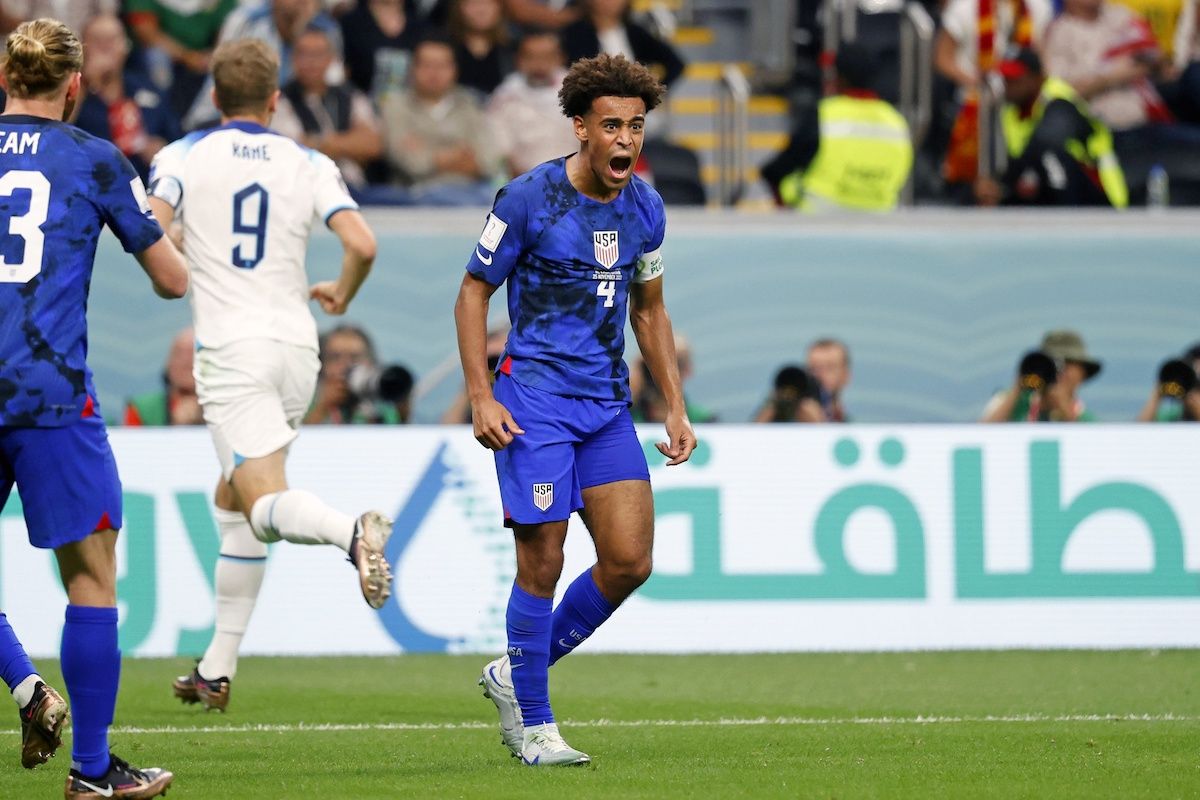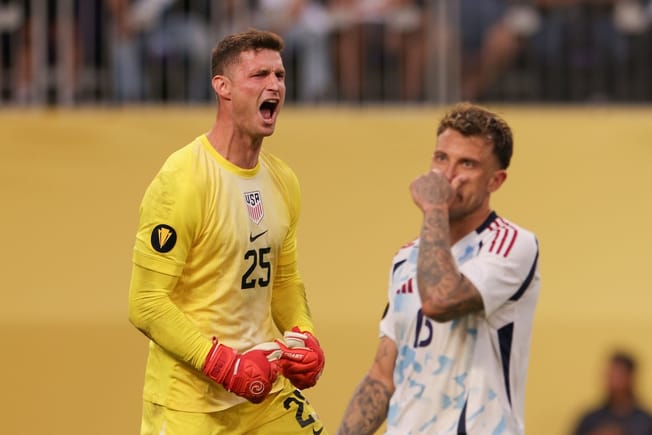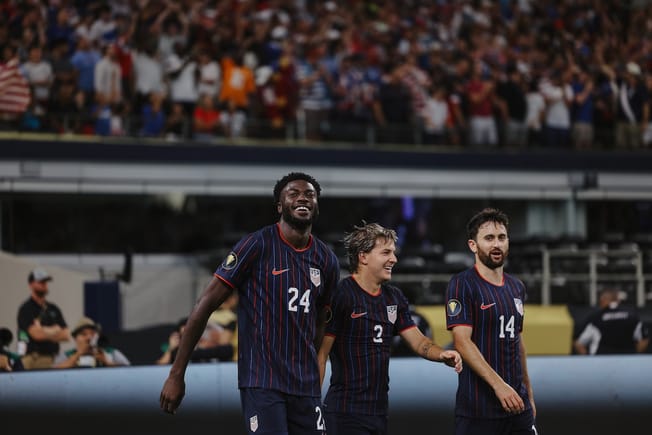Quick Hits
- The United States drew 0-0 with England in their second game of the World Cup group stage
- U.S. manager Gregg Berhalter’s tactical wrinkle helped tip the balance of the game into the United States’ favor
For a second straight match in this World Cup, the United States came away with a draw that very much could’ve been a win. If first half dominance and a deflating second period defined the United States’ game against Wales to open their group stage campaign, the dynamic was reversed against England. Gareth Southgate’s side looked strong initially, but Gregg Berhalter’s defensive gameplan resulted in a controlled USMNT performance.
The key for Berhalter was a change into a 4-4-2 shape off the ball.
His lineup remained the same other than Haji Wright replacing Josh Sargent at striker, but the players were aligned in a much different look than the 4-3-3 used against Wales. Let’s break down a defensive sequence to see how the USMNT’s approach limited their opponents.
THE 4-4-2
England re-used their familiar 4-2-3-1 or 4-1-4-1 approach when building out from the back. You can see how the United States’ two forwards denied the midfield areas. Declan Rice, the deepest-lying midfielder for the English, struggled to find passing angles, and the front line of Wright and Tim Weah shifted well to deny lanes further downfield into Jude Bellingham and Mason Mount.
Berhalter deployed the wingers in the 4-4-2 in an unbalanced manner, with Christian Pulisic much higher on the left side than Weston McKennie on the right. This decision was meant to limit passing lanes to Kieran Trippier, a strong passer at right back. You can see Pulisic’s positioning in this image down below.

The uneven 4-4-2 proved effective at limiting English progression, but subtle misalignments could open up holes in the USMNT’s defense. Here, Pulisic stepped too high and England advanced into the halfspace with a clever pass to a winger. However, the United States did well to recover and find a deeper defensive shape.

What defined the approach? It was every member of the USMNT’s defense reading one another’s position to keep a strong spine; every step forward was met by a balancing move back. As England attacked, Tyler Adams and Yunus Musah dropped low in the central midfield space. Meanwhile, Antonee Robinson covered the open man behind Pulisic.

All of a sudden, England’s potential break came to a screaming halt. Adams and Musah clogged the middle and denied a lane into Bellingham’s diagonal run, and Robinson harmlessly cleared a through ball. Berhalter’s front line of pressure mostly did its job, but when mixed with the midfield and backline, moments like the one I’ve just diagramed led to the clean sheet.
There were moments where Declan Rice would drop deep to form a back three to beat the first line of American pressure, but England never presented a massive threat in the final third for the reasons seen here. Overall, the USMNT conceded only three shots on target and less than half an expected goal.
Football (0.48) 0-0 (0.93) Soccer
— The xG Philosophy (@xGPhilosophy) November 25, 2022
With different personnel and a compact approach, Iran presents a different challenge than either England or Wales, but they’ll have a tall task ahead if the United States bring this level of defensive organization next week. Berhalter made the right tweaks to control the English offense, and he’ll need to be similarly agile in a must-win game.
If Berhalter can recreate the first-half spark from the Wales match and pair it with the defensive chemistry shown against England, then the U.S. may just move on to the group stages.







Comments